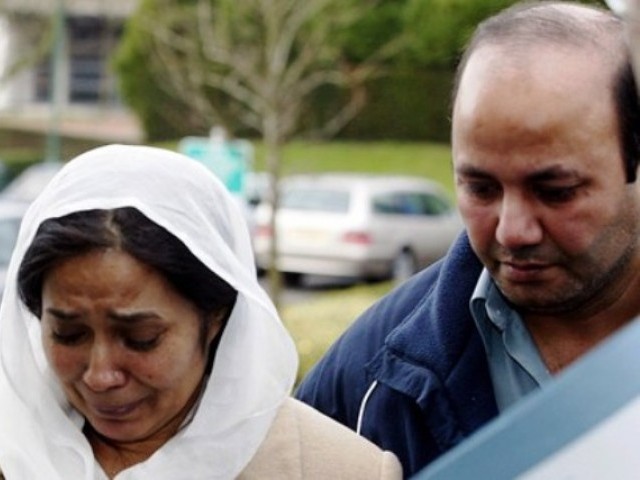The free market has given us as consumers a wide varity of choices with respect to goods and services available to us. We as consumers in today's liberal market oriented world are truly spoiled for choice. It seems that this culture of consumerism, where one is also spoiled for choice, has had an indirect effect on our social values and how we engage and interact with the world around us. Long gone are the days when socializing was a simple exercise based on meeting and interacting with people. Socialising has now transformed into a full fledged self marketing exercise on an individual level. Basic marketing principles are infact very applicable to our every day social lives. Regardless of whether we go about it conciously or unconciously, social success it seems is now determined by how we as individuals market ourselves by applying the various concepts of marketing principles along the way. To illustrate this, let us revisit some of these concepts and analyse them in this very light.
Analysing the Market: We can also call this market research. Our initial approach towards socialising begins with our internal and external environment. In other words the internal environmemt would be our upbringing and what we have learned through our people close to us from the early stages of our lives, while the external environment would be where we are operating in and what we are up against. We do this by analysing the culture, norms, values and beliefs of the people around us in the setting where we wish to socialize with others. For example the target market that we are analysing is our work place, we will be making efforts to try and understand what the workplace culture is, what are the people like and what values do those people associate themselves with?
Branded Versus Generic: If we are seen as ordinary individuals by others, the liklihood of us catching some one's attention is less likely as opposed to us being percieved as high value or extra ordinary individuals. The way the association of a brand helps a product stand apart from its generic counterparts, the very same way if we appear as a branded individual, we are likely to stand apart from the rest of the crowd. Our individual brand, could be determined by something very basic as what school we go to , what part of town we live in or even just how good our English is.
Product Differentiation Strategy: After a brand has established itself as something more than just an ordinary good, it needs to adopt a product differentiation that would allow it differentiate itself from its competitors. In pretty much the same way, when people have a variety of choices when it comes to who to socialize with, if we are able to differentiate ourselves from the rest of the crowd and prove our unique worth, it can lead to succesful and sustainable socialising.
Brand Management: How we manage ourselves as a unique and individual brand is very important. Our perceived value of a product changes when there is a brand involved or whether the brand is strong enough. Corporations engage in a wide variety of activities to firstly develop a brand and then build on the brand equity and value of their product offerings. In the very same way, we as individuals also adopt measures that contribute to our value and worth as individuals in the eyes of others. This ranges from our material possessions, what our Facebook profile says about us and how we present ourselves as an individual. Word of mouth regarding us also plays a significant role in contributing to our brand equity. Since we are individual brands, it is upto us whether we want to potray ourselves as a high value luxury brand or something which is a more common high street brand.
Push and Pull Factor: The adoption of Push and Pull strategies is determined by the strength of an individual brand. The greater the brand equity, the stronger the pulling power of the brand in the eyes of its target audience. Likewise if the brand is not a well established it has to engage in a lot of Push oriented strategies to penetrate the market. In our case here, a good illustration of our brand equity and the push and pull factor is that if we as individuals have high brand equity, we are a magnet for individuals who wish to become a part of our social lives. On the other hand if our brand equity is low or not well established, we have make genuine concentrated efforts to try and be a part of other people's social lives.
Product Life Cycle: In this case the social life cycle. The product life cycle incorporates stages of Launch, Growth, Maturity and Decline. Same concept can be applied to our social lives. If we are new to a social group that can be classified as the launch stage of the cycle, while growth can be illustrated through wide acceptance with a magnetic pull towards us by other members of the group. Maturity would be when we have become fully integrated into the social group, while decline on the other hand happens when we fall out of a social group or we are just hanging on like a loose thread trying to make our social chemistry work.
New Product Development: The way new and innovative products and models hit the shelves of our markets and out go the older products and models, the same way new people with something different to offer are always entering our lives and our social groups, while some are exiting or leaving.
Public Relations Management: When we talk about Public Relations beyond the realm of Marketing, we talk about relationship management with the wider community and the relevant publics involved. In this case, our public relations would be our relationships with people we know (also who we know), how they see us and what they say about us . Be it close friends, neighbours, classmates, co workers, acquaintances, what they say about us and how our relationship with them is will play a significant role in determining our success socially particularly with regards to expanding our social circle. For example, when we meet new people, we try and learn whether we have mutual friends or acquaintances with the new person that we are about to meet and what those people think about the stranger that has just walked into our lives. In a world, where Facebook is part of millions of lives, the liklihood of background check has become more apparent.
Customised versus Standardised Strategies: In this case, we will have to determine whether as an individual, should we adopt a uniform and standardised strategy with which to try and socialise with various publics and social groups, or should we adopt a customised strategy depending on the nature and values of each and every social group? In some cases, a standardised approach works for multiple social groups, but in most cases a different approach is required for every social group to not just penetrate into that group but also build a sustainable relationship.
There are both advantages and disdvantages for those that embark on a self marketing exercise and start applying marketing principles to themselves in their every day lives. Some of these are as follows:
Advantages
It gives individuals the ability to break the social clutter and achieve social recognition. In other words, get noticed. Very importantly it is a good public relations and social networking exercise, where one can build connections that might come handy later on in life. It allows for an early exposure to the reality of the cut throat competitive world out there. Those innovative at socializing later on take an innovative approach to work. In other words encourages innovation and creativity, proving to be a valuable learning opportunity for later stages in life.
Disadvantages
Self marketing manages to reinforce the belief that we cease to be human beings and are nothing more than commodities with their utility value, and we would be off no use to any one unless we had something to offer. Some of these effects include stress, depression, loss of self esteem, as well as sleeping and eating disorders especially amongst the youth. It creates a social divide between social haves and the have nots and encourages misuse of peer pressure, social discrimination and bullying. Opens up people to social exploitation and feeling used and creates misunderstandings through breakdown in communication. The breakdown in communication also happens, when in order to achieve social recognition people try to potray an alternative image of themselves, which might or might not be an accurate reflection of their true selves In other words, one can argue that it encourages the wrong set of social and inter personal values.
























